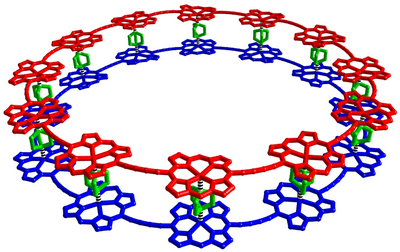Harry L. Anderson学术报告
Supramolecular Porphyrin-Based Molecular Wires
Harry L. Anderson
Oxford University, Department of Chemistry, Chemistry Research Laboratory,
Mansfield Road, Oxford OX1 3TA, United Kingdom
Fax: +44 1865 285002, Tel: +44 1865 275704; E-mail: harry.anderson@chem.ox.ac.uk
Porphyrin-based molecular wires exhibit remarkable properties such as wire-like charge transport, strong two-photon absorption, bright near-infrared luminescence and high affinity for carbon nanotubes. They are amazingly amenable to supramolecular control. The well defined coordination chemistry of the metal centers leads wide possibilities for template-directed synthesis and supramolecular control of function. Furthermore, they are spectroscopically eloquent: Their UV-visible and NMR spectra are extremely sensitive to long-range conformational changes, making them ideal structures for testing ideas of multivalent self-assembly.
This lecture will present recent advances in the supramolecular chemistry of porphyrin-based molecular wires, such as the cooperative formation of the 12-porphyrin nanoring 2:12 DABCO sandwich complex shown below, which has a diameter of 5 nm and is formed in a highly cooperative “all-or-nothing” self-assembly process.

Reference
1. Sprafke, J. K. et al. Angew. Chem. Int. Ed. 2011, 50, 5572–5575.
2. Sprafke, J. K. et al. Angew. Chem. Int. Ed. 2011, 50, 2313–2316.
3. O’Sullivan, M. C. et al. Nature 2011, 469, 72–75.
4. G. Sedghi, et al. Adv. Mater. 2012, 24, 653–657.
时间:
地点:教八218

